
Roots
Consider, if you will, the profound intimacy between a person and their hair, particularly for those whose strands coil and curve with inherent memory. For generations, this relationship has been more than a simple act of grooming; it has been a dialogue with lineage, a living archive passed through the quiet wisdom of hands. When we contemplate whether ancestral oil practices moisturize textured hair, we are not merely asking a question of cosmetic science.
We are inviting a deeper conversation, one that traces the very pathways of tradition, the silent testament of a heritage spun into every curl. To truly grasp this, we must first look to the essential nature of textured hair itself, understanding its intricate design and how ancient hands perceived its needs long before microscopes revealed cellular structures.

Hair Anatomy and the Wisdom of the Elders
The physical makeup of textured hair, with its unique elliptical or flattened cross-section and characteristic bends along the shaft, presents distinct challenges and capacities. Unlike straighter hair forms, the natural coiling of textured hair means its outer layer, the cuticle, tends to lift at these curves, making it more prone to moisture loss. This inherent architecture, while lending itself to magnificent volume and diverse styling, also explains why ancestral communities, through observation and inherited knowledge, placed such a high value on agents that could seal and protect.
The early practitioners, those who understood the needs of the hair without modern scientific terms, recognized this characteristic thirst. They sought out botanical allies whose properties would counterbalance the hair’s tendency toward dryness, thereby preserving its suppleness and resilience.
The very shape of textured hair, distinct from other hair types, means that the natural oils produced by the scalp, known as sebum, struggle to travel down the spiraling strand. This physical reality means that the ends often experience the most significant dryness, a phenomenon observed and addressed by our forebears. They didn’t have the term ‘sebum distribution,’ but they knew the hair needed something extra, something to supplement its natural coating. This knowing guided their selection of specific plant fats and emollients, transforming simple ingredients into a vital component of hair preservation.

Understanding Hair’s Journey and Our Ancestral Guides
Every strand of hair undertakes a continuous journey, moving through phases of growth, rest, and eventual release. These cycles, universal across all hair types, are influenced by internal health, environment, and, critically, by the care received. For textured hair, environmental factors, particularly arid climates or harsh sun, could exacerbate its natural predisposition to dryness. Ancestral practices developed as a response to these living conditions, becoming a shield against environmental aggressors.
The application of oils was often a preventative measure, a thoughtful defense against the elements, rather than merely a remedy for damage. It was a practice rooted in a profound understanding of reciprocity ❉ the earth provided, and the people, in turn, respected and utilized its gifts to sustain their physical being.
The traditional lexicon surrounding hair often extends beyond simple descriptive terms. In many African societies, for example, hair was not merely an aesthetic feature but a significant marker of identity, status, and spiritual connection. The words used to describe hair types and care rituals held communal meaning, reflecting a sophisticated understanding of hair’s role within social structures.
Ancestral oil practices served as a foundational defense against the natural tendency of textured hair to lose moisture, reflecting generations of intuitive understanding of its unique needs.

Traditional Hair Classification and Its Cultural Meanings
While modern classification systems categorize hair based on curl pattern, density, and porosity, ancestral communities often classified hair through a lens of societal roles, age, and spiritual significance. The way hair was tended, including the application of oils, was deeply embedded in these understandings. Certain hair textures or styles, lubricated with specific plant oils, might signify rites of passage, marital status, or even mourning.
- Knotting ❉ Traditional terms described hair’s propensity to intertwine, a reality addressed by lubricating agents.
- Thirst ❉ Metaphorical terms often depicted hair’s need for replenishment, highlighting dryness as a central concern.
- Sheen ❉ The visual quality of well-cared-for hair, indicating health and protection from oils.

How Did Ancestral Communities Perceive Hair Structure without Modern Science?
They perceived it through observation, through touch, and through the outcomes of their practices. A collective body of wisdom, passed down from elder to apprentice, mother to child, articulated a nuanced understanding of hair’s behavior. They knew that certain hair forms felt brittle without regular anointing, that some broke more readily, and that others held a style better when saturated with a particular fat. This experiential knowledge, accumulated over centuries, formed their own intricate “science” of hair, one that prioritized the sustained health and beauty of coiled strands through the consistent application of plant-derived emollients.
The knowledge of how hair ‘drank’ the oils, how it responded to massage, how it changed texture with consistent application, became its own form of empirical data. This information wasn’t written in textbooks but etched into the living memory of a people, enacted in daily and ceremonial rituals.
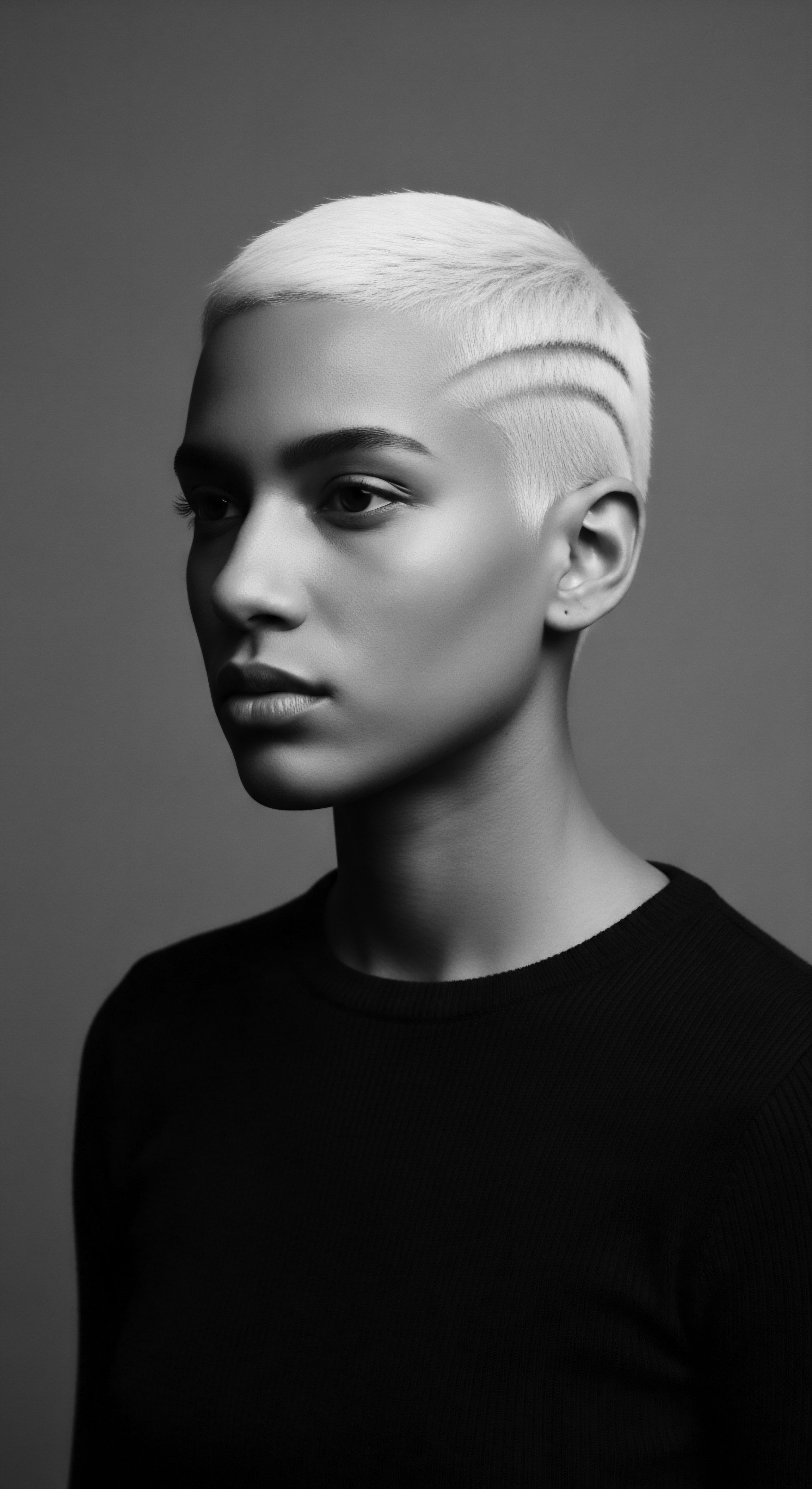
Ritual
The journey from understanding the inherent qualities of textured hair leads us naturally to the living practices themselves—the rituals that transformed simple botanicals into powerful tools of care and expression. These acts were never isolated; they were woven into the very fabric of community, often performed in shared spaces, solidifying bonds and transmitting knowledge. The question of whether ancestral oil practices moisturize textured hair finds its answer not only in the properties of the oils, but in the steadfastness and intention behind their application within these cherished traditions. These were practices of protection, of adornment, and of spiritual connection, each act of oiling a tender reaffirmation of heritage.
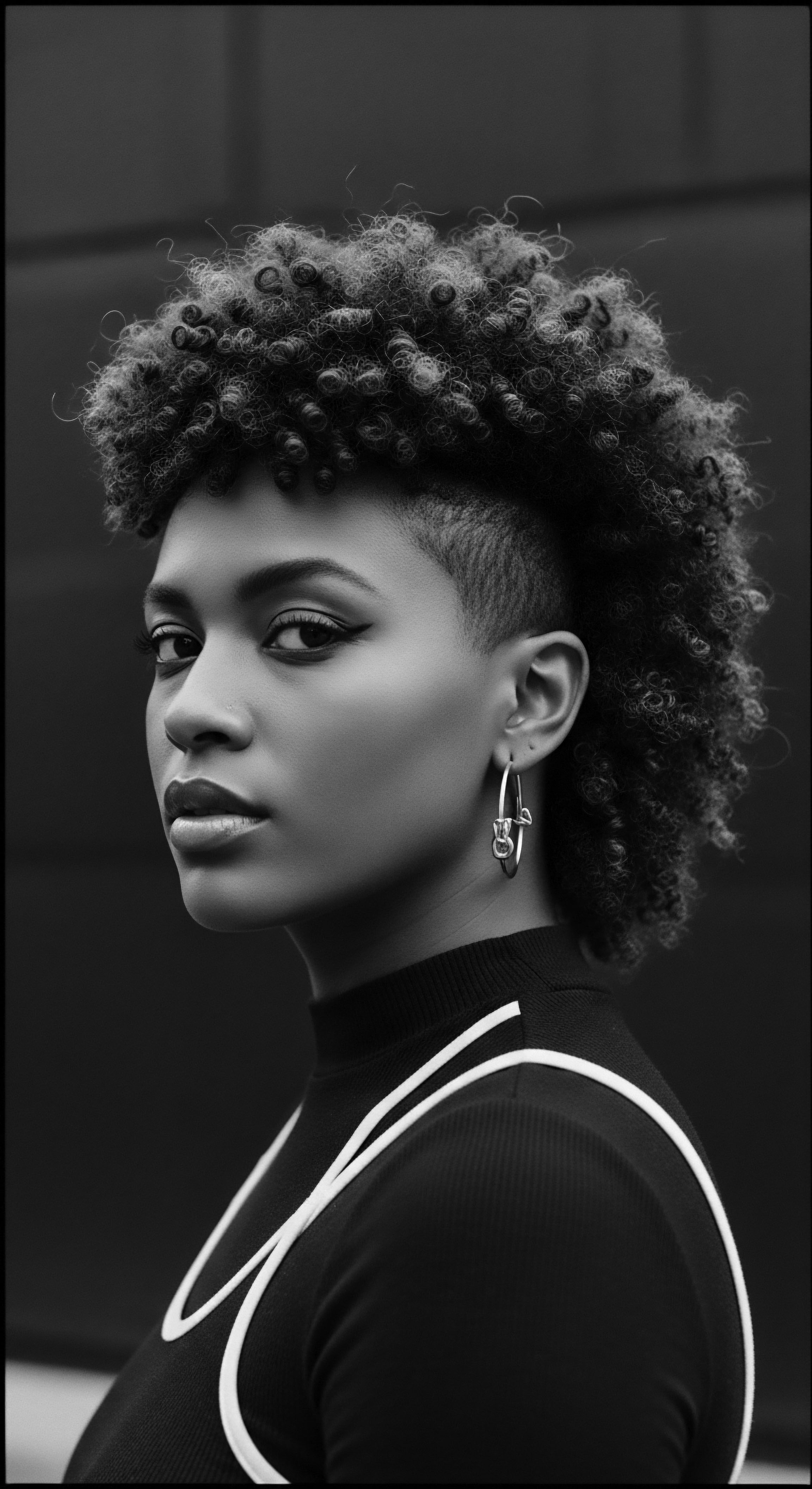
Protective Styling Through the Ages
Protective styling, a cornerstone of textured hair care today, possesses roots stretching back into antiquity. Braids, twists, and locs were not merely stylistic choices; they were profound strategies for preserving hair health, shielding delicate strands from environmental aggression and mechanical stress. The consistent application of oils played a central part in the longevity and efficacy of these styles.
Before braiding or twisting, hair would often be thoroughly saturated with specific oils, creating a barrier that locked hydration within the hair shaft and minimized friction between strands. This ancestral understanding recognized that the hair’s surface, particularly when confined in protective styles, benefited immensely from a substantive coating.
- Cornrows ❉ A classic protective style, often greased with plant oils to reduce tension and maintain scalp health.
- Bantu Knots ❉ Employed oils to set the coil, providing moisture retention and enhancing definition.
- Dreadlocks ❉ Historically cleansed and lubricated with oils to support their formation and prevent excessive dryness.

Natural Styling and Ancestral Definition
Beyond protective styles, ancestral communities also cultivated methods for styling textured hair naturally, allowing its inherent beauty to shine. Oils were indispensable in these techniques, providing slip for detangling, enhancing curl patterns, and adding a healthy sheen. From applying warmed oils before finger-coiling to saturating hair prior to stretching with traditional threading methods, these practices illustrate a sophisticated command over textured hair’s capabilities.
The aim was not to alter the hair’s fundamental nature, but to work with it, to accentuate its inherent splendor. The oils provided the pliability needed for manipulation and the protective layer for maintaining the desired form.
Beyond mere cosmetic application, ancestral oil rituals were communal acts, transmitting generations of wisdom about hair care, embodying cultural continuity and spiritual connection.

How Did Traditional Tools Complement Ancestral Oil Practices?
Traditional tools, crafted from wood, bone, or natural fibers, were often designed to work in concert with these oils. Wide-toothed combs, for instance, would glide through oil-lubricated hair with less breakage, a stark contrast to the challenges faced with dry, tangled strands. Smooth, polished implements used for parting or sculpting were likewise aided by the presence of a rich emollient, preventing snagging.
Even the hands themselves, warmed by the rubbing of oils, became instruments of deep conditioning, massaging the scalp, and distributing the protective coating along each strand. The synergy between oil and tool, developed over countless generations, reflects a holistic approach to hair care where every element served to honor and preserve the hair’s natural vitality.
For instance, the use of a simple, smooth stick or finger to section hair, combined with generous application of shea butter or other plant oils, allowed for the meticulous creation of intricate braid patterns that would remain neat and moisturized for longer durations. These small, deliberate actions, repeated daily or weekly, formed the rhythmic cadence of ancestral hair care, ensuring that oils were not just applied, but truly worked into the hair and scalp.

Wigs, Hair Extensions, and Their Ancient Connection to Oils
The adornment of wigs and hair extensions, often perceived as a modern invention, has a long and storied past within various African cultures. These were not simply fashion statements; they held social, spiritual, and ceremonial significance. Even in the context of these artificial or augmented hair forms, ancestral oil practices held a place.
Natural fibers or human hair used for extensions would be prepared, cleaned, and often conditioned with oils to ensure longevity, flexibility, and a natural appearance. Oils were also used on the scalp beneath these adornments to maintain scalp health and prevent dryness or irritation, ensuring the wearer’s comfort and well-being.
The care of these elaborate extensions or wig pieces, particularly those fashioned from human hair or natural plant fibers, would involve periodic refreshing with oils to maintain their suppleness and appearance, ensuring they blended harmoniously with the wearer’s natural strands or scalp. This careful attention underscored the value placed on hair, whether natural or augmented, as a powerful vehicle of identity and beauty.
| Application Type Moisture Sealing |
| Ancestral Context Coating hair before braiding to protect from desiccation. |
| Modern Parallel "LOC" method (Liquid, Oil, Cream) for hydration retention. |
| Application Type Scalp Health |
| Ancestral Context Massaging oils into the scalp to alleviate dryness and flaking. |
| Modern Parallel Targeted scalp treatments and pre-shampoo oiling. |
| Application Type Detangling Aid |
| Ancestral Context Applying oils to hair prior to combing with wide-toothed tools. |
| Modern Parallel Using oil-infused conditioners or leave-ins for slip. |
| Application Type These parallels reveal a timeless wisdom in ancestral practices, validated by contemporary understanding of hair needs. |

Relay
If ‘Roots’ grounded us in the fundamental qualities of textured hair and ‘Ritual’ illuminated the enduring practices, then ‘Relay’ serves as the conduit, bridging the ancient whispers of ancestral wisdom with the resonant findings of modern inquiry. Here, the inquiry “Do ancestral oil practices moisturize textured hair?” transcends simple affirmation, delving into the very mechanisms by which these historical applications provided tangible benefit, often foreshadowing contemporary scientific understanding. It is in this section that we witness the powerful interplay of observed efficacy and empirical validation, underscoring how cultural heritage informs our most cutting-edge understandings of hair care.
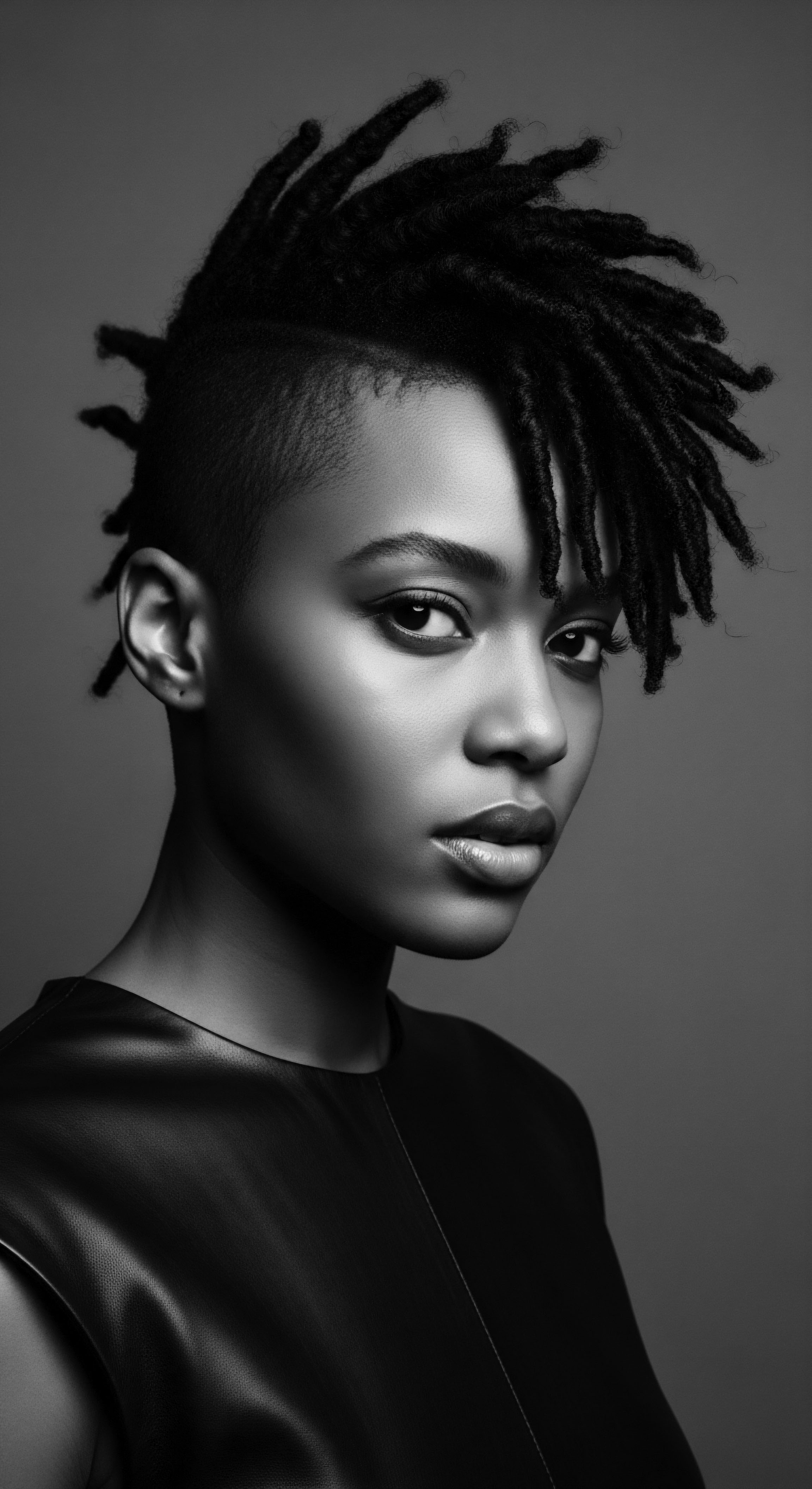
Building Regimens from Ancient Blueprints
The construction of a hair care regimen, whether daily or weekly, finds deep resonance with ancestral principles of consistent nourishment and protection. While modern routines often involve a multitude of products, the ancestral approach, though simpler in its material components, was no less sophisticated in its systemic application. It focused on regular cleansing, often with natural clays or herbs, followed by intensive conditioning and sealing with oils.
This consistent layering, intuitively understood for its ability to shield the hair, forms the very blueprint for regimen building today. The practice of applying oils after water, for instance, intuitively mirrored what science now validates as an effective method for “locking in” moisture, preventing its evaporation from the hair shaft.
Consider the systematic application of oils in a traditional regimen ❉ perhaps after a communal wash day near a river, where hair was cleaned with saponin-rich plants, hands would then work generous portions of warmed plant butters into damp strands. This sequence, replicated across generations, allowed water to hydrate the hair’s inner structure, while the oil formed a protective, occlusive layer, slowing down moisture loss. The efficacy of this simple, yet powerful, two-step process was observed and transmitted through lived experience.
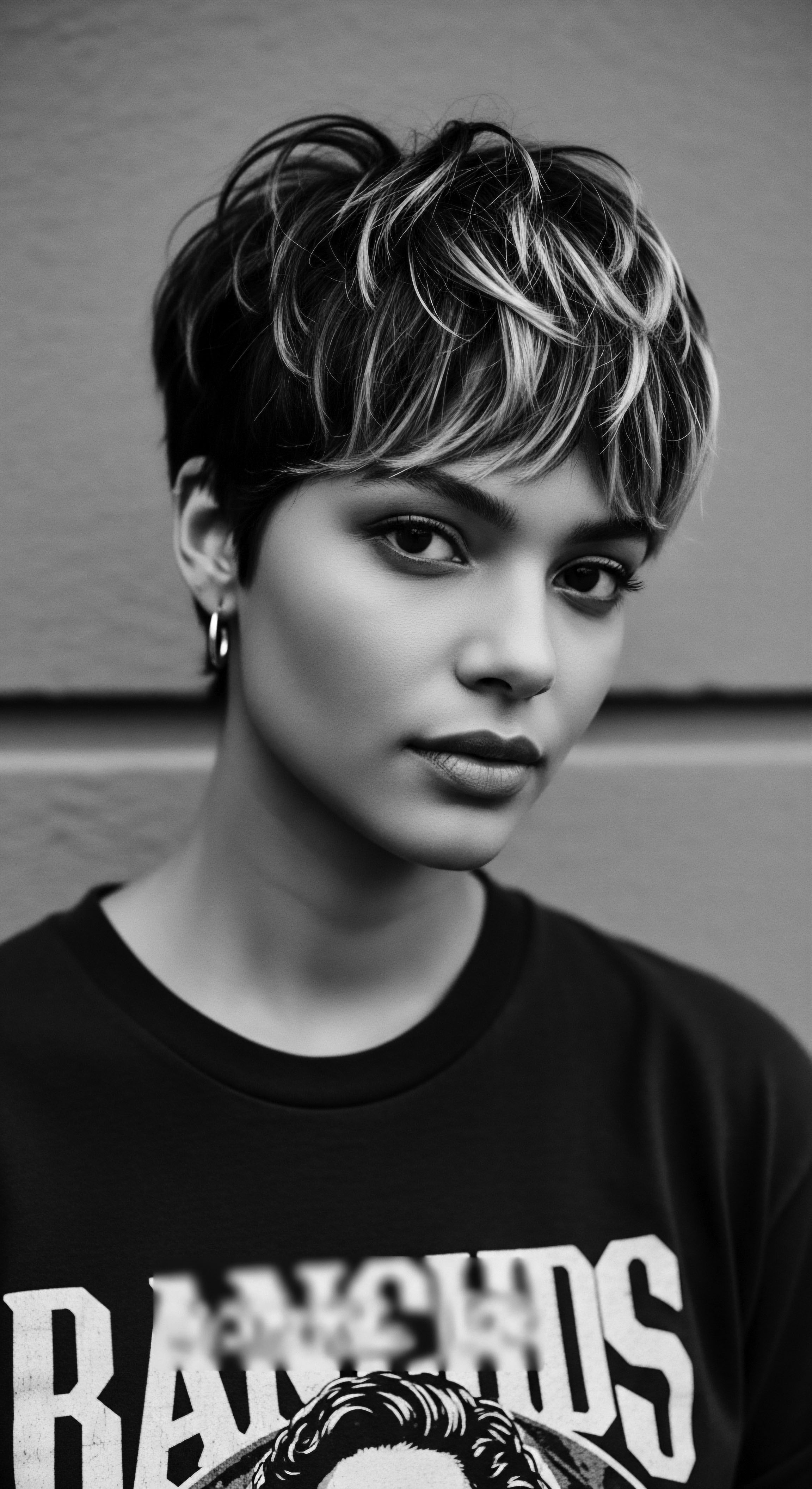
The Nighttime Sanctuary and Bonnet Lore
The concept of safeguarding hair during sleep, a practice often dismissed in broader cultural narratives, holds deep significance within textured hair heritage. The use of head wraps, scarves, and later, the silk or satin bonnet, is a direct ancestral inheritance. These coverings served a vital function ❉ to prevent moisture from being drawn out of the hair by absorbent fabrics like cotton, and to minimize friction that could lead to breakage and tangling.
Oils, applied as part of a bedtime ritual, enhanced this protective barrier, ensuring that the hair remained pliable and moisturized through the night. The silk bonnet, a seemingly simple accessory, stands as a quiet symbol of this enduring wisdom, a testament to generations who understood the subtle forces that could compromise hair health.
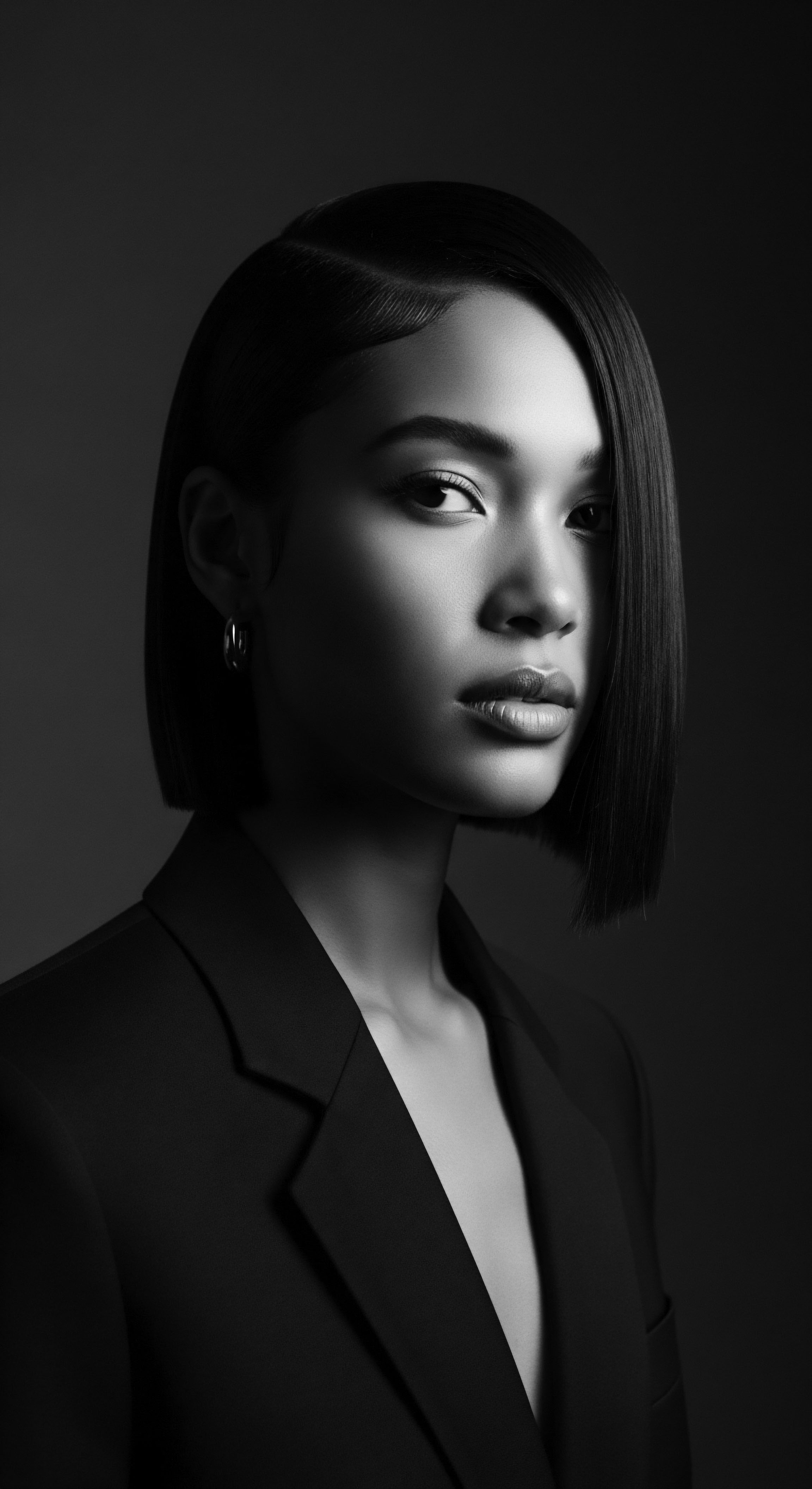
Specific Ingredients and Their Ancestral Science
The efficacy of ancestral oil practices for moisturizing textured hair lies fundamentally in the unique chemical compositions of the plant oils and butters employed. These were not random selections; they were chosen for observable properties—their richness, their ability to soften, their lasting presence on the hair. Modern scientific analysis now provides a deeper lens into why these choices were so prescient.
One compelling example is the enduring utility of Shea Butter (Vitellaria paradoxa), a staple across West African communities. Historically, women in the ‘shea belt’ collected and processed shea nuts through labor-intensive, traditional methods to yield a rich, creamy butter. This butter was revered not only for its cosmetic applications but also for its medicinal properties.
As an illustration, for centuries, specific communities such as the Mossi people in Burkina Faso have relied on shea butter as a primary emollient for hair and skin, a practice passed through generations. Researchers have since corroborated this ancestral wisdom, with studies like that of Maranz and Wiesman (2004) detailing shea butter’s primary components ❉ a significant proportion of Stearic Acid (around 41.5%) and Oleic Acid (around 46.4%), alongside other fatty acids.
Stearic acid, a saturated fatty acid, and oleic acid, a monounsaturated fatty acid, both contribute to shea butter’s occlusive and emollient qualities. The presence of these fatty acids allows shea butter to form a protective film on the hair shaft, effectively reducing transepidermal water loss and sealing in hydration, thus addressing the very challenge of moisture retention inherent to textured hair. Furthermore, shea butter contains a notable unsaponifiable fraction, rich in compounds like triterpenes, tocopherols (Vitamin E), and phytosterols, which contribute to its anti-inflammatory and antioxidant properties, benefiting scalp health. This scientific understanding validates the generations of observed efficacy where shea butter left hair soft, supple, and less prone to breakage, mirroring the moisturizing action ancestors intuitively recognized.

Textured Hair Challenges and Ancestral Solutions
The challenges facing textured hair—dryness, breakage, and tangling—are not novel. They have been present for as long as these hair forms have existed. Ancestral practices with oils were direct responses to these issues. For dryness, heavy butters and oils were applied regularly.
For breakage, oils provided lubrication during detangling, reducing mechanical stress. For tangling, the slip provided by oils allowed for gentler manipulation.
- Moisture Loss ❉ Addressed by oils as occlusive barriers, preventing evaporation.
- Friction Damage ❉ Oils reduced rubbing between strands, minimizing breakage during daily activities or styling.
- Pliable Texture ❉ Oils contributed to hair’s softness, making it easier to manage and less prone to knots.

Holistic Influences on Hair Wellness
Beyond the physical application, ancestral wellness philosophies often linked hair health to overall well-being, diet, and even spiritual harmony. The ingredients used in oils were often those also used in food or medicine, reflecting a seamless connection between internal and external health. This holistic perspective meant that nourishing the body with wholesome foods, maintaining a balanced spirit, and engaging in communal rituals were all considered integral to healthy hair. The oils were not merely a product; they were a component of a larger ecosystem of care that celebrated the body as a sacred vessel, linking physical vitality with ancestral continuity.
The scientific validation of traditional oils, such as shea butter’s fatty acid composition, provides empirical evidence for the moisturizing benefits intuitively understood and applied by ancestral communities for centuries.

Did Ancestral Diets Impact Hair Health and Oil Efficacy?
Indeed, ancestral diets, rich in natural fats, vitamins, and minerals derived from local produce, undoubtedly played a supporting role in hair health from within. A diet robust in nutrient-dense foods would contribute to stronger hair follicles and healthier sebum production. The external application of oils then complemented this internal nourishment, creating a comprehensive approach to hair care.
The efficacy of ancestral oil practices was thus a synergy of what was applied externally and what was consumed internally, all within a lifestyle deeply attuned to natural rhythms and resources. This combined wisdom speaks to a profound and integrated understanding of human well-being, where hair was seen as a barometer of overall vitality.
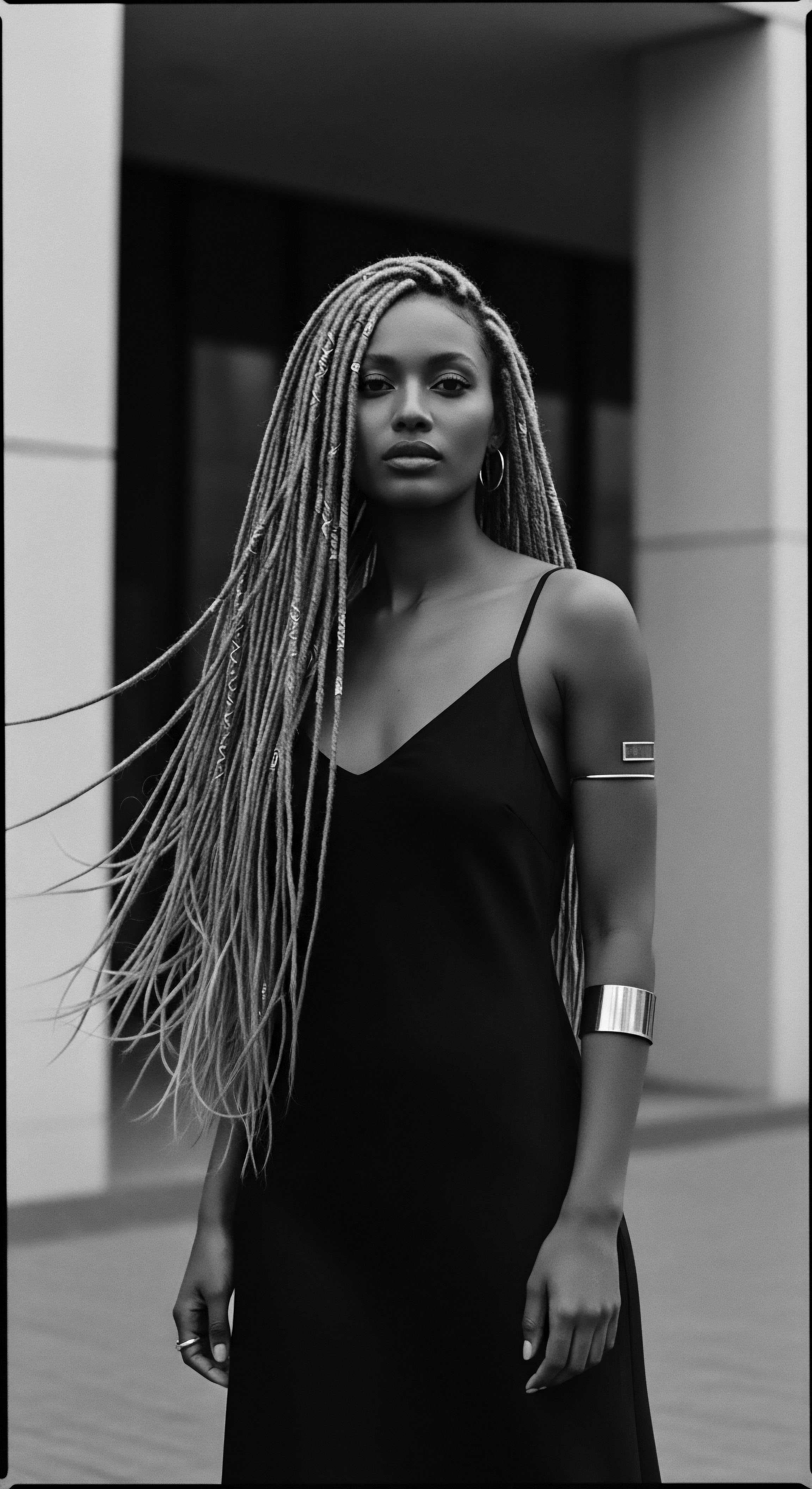
Reflection
To ask “Do ancestral oil practices moisturize textured hair?” is to open a portal into a heritage that refuses to be forgotten. From the fundamental understanding of textured hair’s innate thirst to the meticulous rituals that nurtured it, and finally, to the scientific validations that echo ancient wisdom, a clear affirmation emerges. The answer resounds with a profound ‘yes’, steeped in the layered truths of history, culture, and nature. These practices are more than just techniques; they are expressions of a deep reverence for one’s own identity, a quiet declaration of resilience passed from one generation to the next.
The soul of a strand, indeed, holds not only the memory of its unique structure but also the indelible imprint of hands that cared for it across time, anointing it with the gifts of the earth. This ongoing dialogue, between past and present, tradition and discovery, ensures that the story of textured hair, its heritage, and its care, continues to write itself as a vibrant, living archive. The wisdom of our ancestors, preserved in the very act of anointing hair with oil, stands as an enduring testament to their profound connection with the earth and its power to sustain life and beauty.

References
- Maranz, S. & Wiesman, Z. (2004). Fatty Acid Composition of Shea Butter from Different Countries of the Shea Belt. Journal of the American Oil Chemists’ Society, 81(10), 915-920.
- Muotono, P. Maanikuu, I. & Peker, K. (2017). Medicinal and nutritional benefits from the Shea tree (Vitellaria paradoxa). Journal of Biology, Agriculture and Healthcare, 7(22), 51-57.
- Adegbulu, A. Ebie, C. Cole-Adeife, O. & Ilomuanya, M. (2020). Shea butter as skin, scalp, and hair moisturizer in Nigerians. International Journal of Dermatology, 60(3), 390-394.
- Goumbri, B. W. F. et al. (2024). African Shea Butter Properties Related to Common Extraction Technologies ❉ A Review. European Journal of Lipid Science and Technology, 126(12), 2300067.
- Diop, S. (2008). Shea Butter ❉ The Women’s Gold. Africa Review of Books, 4(1), 16-17.
